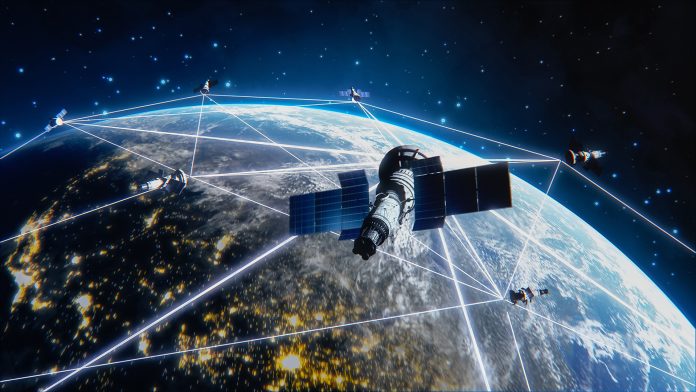Alastair Macleod, CEO of connectivity provider Ground Control, demystifies satellite IoT for cellular IoT operators and advises how to plug the ‘not spot’ gaps.
Cellular IoT is one of the most common forms of IoT connectivity for several reasons. It has vast coverage, works pretty much out of the box, supports low- and high-bandwidth applications, and is a relatively cheap investment.
But what about those remote or tough-to-reach locations, where critical data for a raft of industries, from utilities and renewables through to forestry and wildlife tracking, are not covered by cellular coverage?
One of the biggest challenges cellular IoT specialists face when implementing satellite IoT connectivity is learning to throttle back on data requirements. Satellites are too expensive and too power-hungry to use in the same way as terrestrial networks.
But if you know what to expect, you can plan accordingly and save yourself time and money in the long run. Here are four key considerations to set you on the right path.
Data optimisation
When 90% of your sites have been connected with cellular, but the final 10% are out of cellular coverage, you may be left with satellite as your only option. This is common, and the first hurdle is the volume of data you’re expecting to push through a satellite connection. As more and more IoT devices use up more and more bandwidth, even in cellular IoT, developers are being encouraged to be more circumspect with how much bandwidth they truly need.
This is an acutely important consideration in satellite IoT. Satellite Network Operators (SNOs), like Mobile Network Operators (MNOs), have a limited amount of licensed spectrum. In addition, they have satellite masts that are really far away, and they consequently charge a relatively high premium for utilising limited capacity.
Cost, therefore, is a major incentive for systems integrators and developers to start thinking about how the amount of data you send over satellite can be reduced. The other incentive is power consumption: sending a lot of data tends to mean larger antennae which can’t operate without mains power. And as we’re talking exclusively about IoT here, we’re assuming the 10% of sites you’re unable to connect with cellular are also fairly unlikely to have mains power too.
In these scenarios, the most practical solution is edge computing. There are many ways to use some intelligence at the edge to restrict how much data is sent over satellite. You can reduce the frequency of your transmissions, batching them to make better use of an IP connection; you can report by exception; and you can define and tag your data priority. Doing this will allow certain types of data to pass through more frequently than other, less critical types of data.
Interoperability
You may have had to navigate situations where multiple communication protocols—such as WiFi, Bluetooth or Zigbee—have been to contend with, particularly in legacy infrastructure. If so, you’ll already appreciate the benefit of planning ahead and considering the future development of your network. If satellite IoT will factor in, knowing the application protocols in most common use will help.
There are basically three options for IoT communication over satellite:
Use an IP service like Iridium Certus 100 or Inmarsat BGAN M2M
This plug-and-play option is the easiest means of sending data over satellite but not the most efficient or cost-effective way. However, there’s plenty you can do to optimise your data to make it work better for you if you’re not in a position to change your application.
Use a distributed MQTT broker solution
If you’re using MQTT, Ground Control’s IoT Gateway effectively places an MQTT broker at either side of a satellite transmission, re-formatting the data and managing the connection, message queuing, retries, etc. automatically. We use Iridium Messaging Transport to move your data, which is message-based. Messaging is the most cost-effective way to transmit data over satellite, and this is an easy way to leverage those efficiencies. This is explained further here in our blog, ‘A Guide to Satellite IoT for Cellular IoT Specialists’.
Re-engineer your solution to use messaging
This low-level integration will allow you to use one of the proprietary messaging services offered by SNOs, such as Iridium Short Burst Data or Inmarsat’s IsatData Pro, both extremely cost-effective means of sending data via satellite. However, it does usually require development work to make data compatible with a messaging service.
Coverage
Lack of cellular coverage is most likely what brought you to satellite in the first place, but not all satellite network constellations are created equal. Firstly, you need to ensure that the satellite network, or networks you’re considering, have orbiting satellites that can ‘see’ your devices’ location. Only one satellite IoT network – Iridium – is truly global, although others, including Inmarsat / Viasat, come close.

Then, you need to consider satellite density and architecture. Newer satellite networks may have just one or two satellites in orbit, which means you’ll get your data very slowly. On the plus side, they charge relatively little for airtime. Like many things, you get what you pay for: pay little, and you’ll get data once or twice a day with no delivery guarantees. Pay more, and you’ll get virtually real-time data from a network heavyweight trusted by the military and critical national infrastructure.
Further, you need to look at the precise location of the asset/application you’re extracting data from. If it’s surrounded by trees, mountains, buildings, etc., then there’s a good chance it will have difficulty ‘seeing’ the satellite. There are workarounds in these scenarios, and your satellite IoT partner will help you here.
Power consumption
If your device is so far removed from civilisation that there’s no cellular coverage, there’s a reasonable chance there’s a limited power supply, too. Larger VSAT dishes like the types required to provide Starlink and OneWeb broadband internet services need mains or generator power to operate. However, satellite IoT-specific terminals can be, and often are, battery-powered.
You can preserve battery power in several ways, such as sending data less frequently and simply sending less data. In addition, battery power can be preserved using a message-based connection instead of an IP-based connection or by making sure your antenna has a clear view of the satellite network, so no power is wasted in failed connection efforts.
These aren’t all exclusively satellite-IoT considerations either; if your device application disregards the characteristics for which LPWA networks were designed, you’ll drain batteries faster, congest networks unnecessarily, and degrade the service quality. If you assume data constraints from the outset, it’ll benefit your application across all communication technologies.
Satellite IoT delivers reliable connectivity in remote and hard-to-reach locations but comes with operational challenges due to increased power consumption and non-terrestrial connectivity expenses. If you consider data constraints from the earliest part of your planning, you will find these challenges far easier to overcome should they occur in your future network development. Even the cellular spectrum has limits, and scarcity drives innovation.









